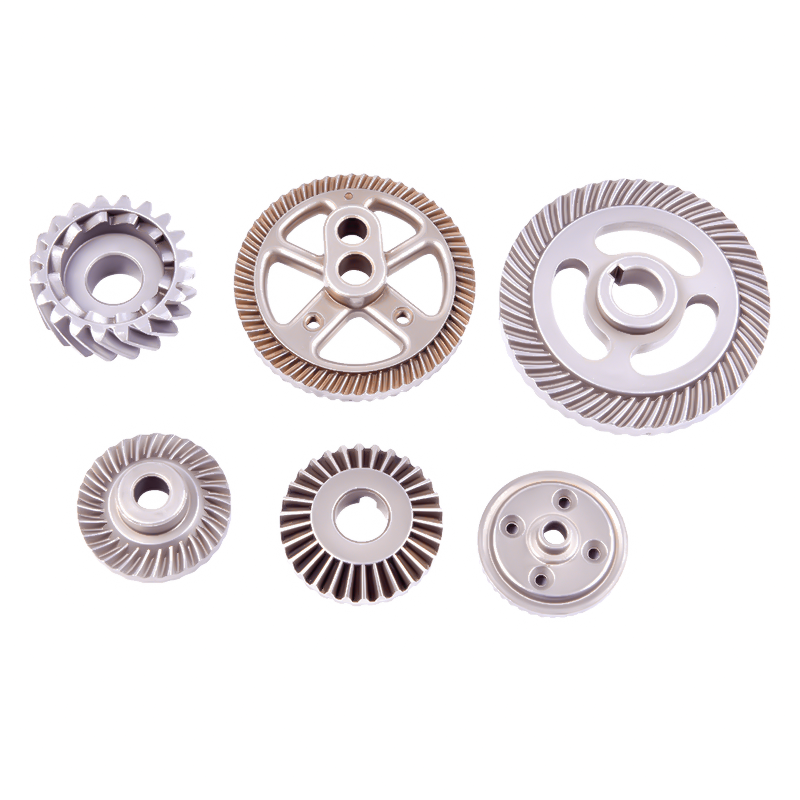In the realm of mechanical engineering, advancements in gear technology have been pivotal in driving innovation and efficiency across industries. One groundbreaking development that has gained significant attention is the Powder Metallurgy Double Gear. This article will delve into the world of this revolutionary technology, uncovering its potential to transform gear systems and revolutionize mechanical engineering as we know it.
Powder Metallurgy Unveiled: A Paradigm Shift in Gear Manufacturing
The first section will introduce readers to the concept of Powder Metallurgy and its impact on traditional gear manufacturing methods. By exploring the unique characteristics of this technique, such as using powdered metals and advanced sintering processes, we can understand how it enables the creation of high-performance gears with exceptional precision and durability.
The Power of the Double Gear: Amplifying Efficiency and Performance
This section will focus on the key features and advantages of the Double Gear technology within the realm of Powder Metallurgy. Readers will discover how the Double Gear enhances the efficiency of gear systems by distributing the load across multiple gear pairs. We will explore its ability to minimize power loss, reduce friction, and increase torque, resulting in gear systems that outperform traditional single gear setups.
Unleashing Innovation: Applications and Industries Transformed
The revolutionary potential of Powder Metallurgy Double Gear extends across various industries. This section will highlight real-world applications and success stories where this technology has been implemented. From automotive and aerospace to robotics and renewable energy, we will uncover how the Double Gear technology is unlocking new possibilities, improving performance, and driving innovation in different sectors.
Precision Engineering at its Best: The Science Behind the Double Gear
Understanding the underlying science is crucial to grasp the power of the Double Gear. This section will dive into the intricate design principles, advanced material selection, and meticulous engineering required to develop and manufacture Double Gear systems using Powder Metallurgy. Readers will gain insight into the optimized tooth profiles, gear ratios, and meshing dynamics that contribute to the exceptional performance of these gears.
Overcoming Challenges: Pushing the Boundaries of Double Gear Technology
While Powder Metallurgy Double Gear has transformed gear technology, it is not without its challenges. This section will explore the obstacles encountered during its development, such as material selection, heat treatment processes, and scalability. It will also discuss ongoing research and industry collaborations aimed at overcoming these challenges to push the boundaries of Double Gear technology further.
The Powder Metallurgy Double Gear technology has emerged as a revolutionary force in the field of gear systems, unlocking unprecedented levels of efficiency, performance, and durability. By harnessing the power of advanced material science, precision engineering, and innovative design principles, this technology is reshaping industries and propelling mechanical engineering into new frontiers. As the journey of Double Gear continues, it promises to revolutionize gear systems, setting new benchmarks for performance, and inspiring a new era of innovation and progress.

Double gear is two coaxially rotating gears (generally the same module) made into one piece, generally processed by gear shaping, and selected for fine hobbing or grinding according to precision requirements, generally used to change the rotational speed or speed of the output shaft , for the speed change mechanism can make the mechanism compact.
The double gear is generally divided into two parts: the ring gear and the wheel body. According to the structure and shape of the product wheel body, it is divided into disc gears. There are two gear rings. Has splines.
Gear transmission is widely used in modern machinery and equipment, and its function is to transmit motion and power according to the specified speed ratio.
Gear processing needs to ensure shape rules, coaxiality, dimensional accuracy and shape and position accuracy, etc. The processing process (for reference): forging, normalizing - rough turning outer circle and end face - drawing spline holes - deburring - fine Car outer circle and end face - inspection - gear hobbing - gear shaping - chamfering - deburring - shaving - tooth high frequency quenching - pushing hole - honing - general inspection.


 English
English Español
Español About us
About us +86-15867340627
+86-15867340627 cy@sxgtqp.com zb@sxgtqp.com
yzq@sxgtqp.com
cy@sxgtqp.com zb@sxgtqp.com
yzq@sxgtqp.com Building 44, Energy Saving Shaoxing Environmental Protection Industrial Park, Yuecheng District, Shaoxing City, Zhejiang Province, China
Building 44, Energy Saving Shaoxing Environmental Protection Industrial Park, Yuecheng District, Shaoxing City, Zhejiang Province, China